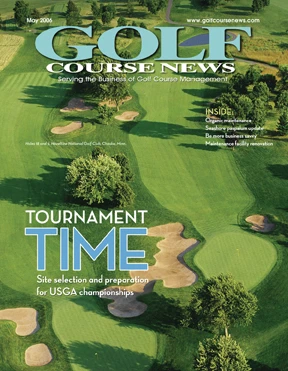Many are staggered by driving distance stats from the PGA Tour:
|
|
• 21 PGA Tour players average 300-yard tee shots;
• 42 Nationwide Tour players average 300-yard tee shots;
• The average PGA Tour drive is 288 yards;
• 15 percent of PGA Tour drives exceed 345 yards; and
• 0.25 percent of PGA Tour drives exceed 400 yards.
What’s most staggering is the exaggerated influence those drives have on course design. The 63 long-driving players represent 19 percent of tour players, and about 0.00025 percent of the U.S. golfing population. If there are 100 times that many other golfers matching that length, their combined tee shots would amount to only 0.1 percent of annual U.S. tee shots.
Ball manufacturers sell hope to the other 25 million golfers, but most aren’t hitting the ball farther. Yet, golf courses keep getting longer to accommodate this miniscule portion of golfers, when achieving proper total playing distance for the masses is critical to two key elements of enjoying golf: scoring and speed of play. If average players can’t reach greens in regulation even with their best shots, they must play additional shots, which lengthens the time to play by 10 to 20 minutes.
The extra time and strokes diminish a course’s popularity, profitability and even home sales, according to John Wait, a golf operations consultant for Sirius Golf Advisors. Wait consulted with a senior-oriented, residential golf course in Florida where the forward tees measured more than 5,700 yards. Wait told the owners they wouldn’t sell many lots or memberships – if women were responsible for the home-buying decision – with a course that played like a 7,152-yard course for men. He recommended adjusting the tees.
Many courses could benefit from tee adjustments. Any course built to the modern standard of 7,000/6,700/6,400/5,600 yards often play at unsuitable yardages for almost everyone because the back tees are too short and the middle and forward tees are too long.
Golfers want a course that’s not too hard but not too easy. Men gravitate to tees they enjoy, and the 6,000- to 6,400-yard tees are the busiest among males typically. Male ego plays a part in tee selection. Most men won’t play courses marked below 6,000 yards, yet seniors prefer course yardage well short of that figure. At many courses, those choices aren’t often present or combined together, which subtly forces players to play yardage too long for their games.
Shot distances for common skill levels are fairly well known, based on research by many, including American Society of Golf Course Architects member Bill Amick, who published his research in 1996. Amick’s data is summarized, with updates, in the table at the bottom of the page.
I recommend five distinct tee areas for championship courses for peak popularity. I combined groups, as shown by the colors, and calculated average shot distances, favoring the shorter group of each combination and leaving Mal by himself as a representative group. (See table below.)
Assuming each player wants to reach greens in regulation using various clubs:
• Par 3s range from wedge to about 90 percent of driver distance;
• Par 4s range from a potentially drivable hole (110 percent of typical tee shot distance) to the maximum distance reachable in two shots; and
• Par-5 holes range from reachable in two to driver, wood, 5 iron.
One might debate some assumptions, such as long par 3s that some don’t like or the need for all players to reach all greens. However, it’s not as important to get to an ideal yardage as it is to judge how each hole plays and fits the land.
If your course is unpopular, you might look at adding and relocating tees where possible to achieve a better length balance for your clientele’s enjoyment. If you’re rebuilding tees, you also might consider sizing them to accommodate the play of the three largest groups of players, making sure the tees that play from 6,000 to 6,400 yards get more than half of the overall total tee space.
Originally, tees were a functional afterthought but gradually evolved designwise, which should continue to afford enjoyment to the increasing skill levels of those who choose to play the game. GCN
Get curated news on YOUR industry.
Enter your email to receive our newsletters.

Explore the May 2006 Issue
Check out more from this issue and find your next story to read.
Latest from Golf Course Industry
- Singapore Island CC reopens Island Course after renovation
- Pinnacle Golf managing Revival GC at the Crescent
- GCSAA honors duo for advocacy efforts
- Quickly back into play
- Audubon International names BioBlitz winners
- Eaglebrooke reopening after six-month renovation
- Sipcam Agro USA hires new national sales manager
- Reel Turf Techs: Andrzej Strzepek






